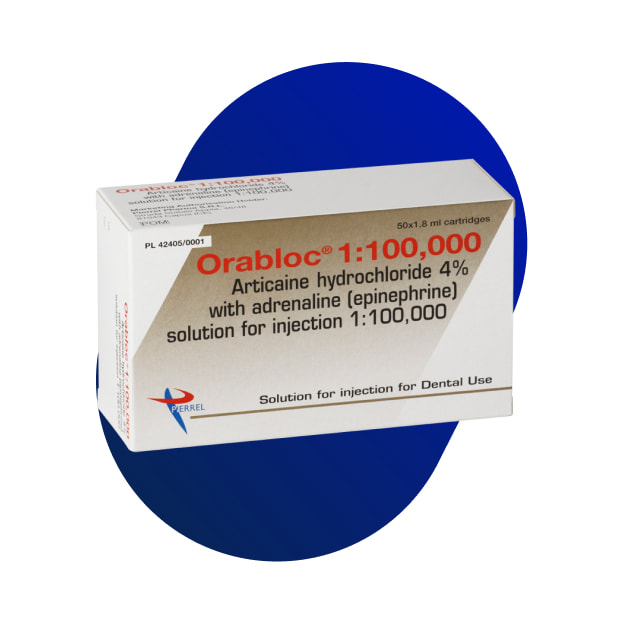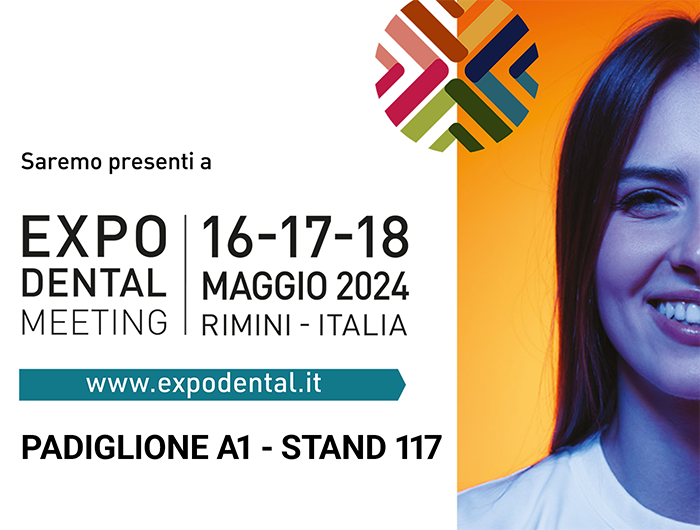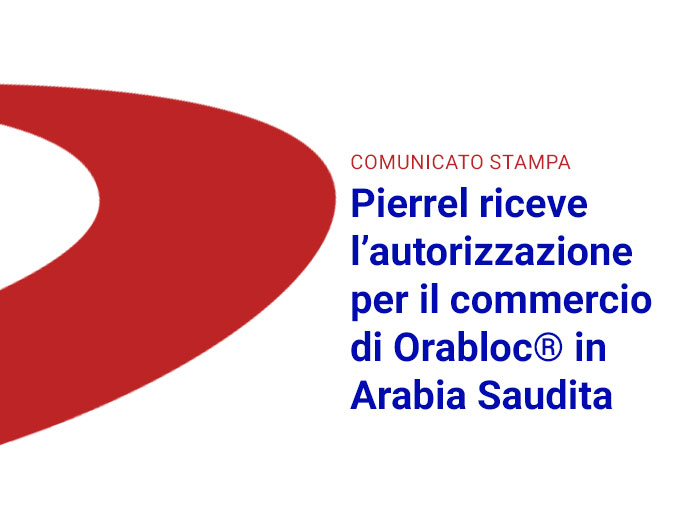

Dental Anesthetics based on Articaine
Suitable for infiltrative or conductive local anesthesia in simple and complex dental procedures…
Summary of Product Characteristics
1 ml solution for injection contains 40 mg articaine hydrochloride and 0.01 mg adrenaline (epinephrine) as adrenaline tartrate.
One cartridge of 1.8 ml of solution for injection contains 72 mg articaine hydrochloride and 0.018 mg adrenaline (epinephrine) as adrenaline tartrate.
Excipients with known effect:
Contains sodium metabisulphite (E223) 0.5 mg/ml.
For the full list of excipients, see section 6.1.
See more – Orabloc 1:100,000 SPC
Solution for injection.
Clear, colourless solution for injection.
The pH of the solution ranges from 3.0 to 4.5.
Osmolarity: 270 mOsm/KG
See more – Orabloc 1:100,000 SPC
Therapeutic indications
Orabloc is indicated in adults, adolescents and children of 4 years and older for local anaesthesia (infiltration and nerve-block anaesthesia) in dentistry:
- mucosal and bone surgery requiring stronger ischaemia,
- dental pulp surgery (amputation and extirpation),
- extraction of fractured teeth (osteotomy),
- protracted surgical interventions,
- percutaneous osteosynthesis,
- cystectomy,
- mucogingival interventions,
- apicoectomy
Posology and method of administration
Posology
For uncomplicated forceps extraction of the upper teeth where no inflammation is present, a vestibular injection of 1.8 ml per tooth is usually sufficient. In isolated cases, an additional vestibular injection of 1-1.8 ml may be necessary to achieve complete anaesthesia. Injection via the painful palatine route is normally not necessary.
Where the palate requires incision or suture, a palatine depot of about 0.1 ml per puncture is sufficient. Where multiple extractions of adjacent teeth are necessary, it is possible in most cases to reduce the number of vestibular injections required.
In uncomplicated forceps extraction of lower premolars where no inflammation is present, injection of 1.8 ml per tooth is usually sufficient. However, if the anaesthesia is incomplete, an additional vestibular injection of 1-1.8 ml is recommended. Conventional mandibular anaesthesia is indicated only where the above-mentioned procedure does not result in a complete anaesthesia.
For surgical operations, it is recommended that the dose of Orabloc be adjusted individually based on the operation’s severity and duration.
Over the course of treatment, adults may be given up to 7 mg articaine per kg body weight. Using the aspiration technique, doses of up to 500 mg (equivalent to 12.5 ml of solution for injection) were well tolerated.
See more – Orabloc 1:100,000 SPC
Pharmacodynamic properties
Pharmacotherapeutic group: Anaesthetics, local; Amides.
ATC code: N01BB58
Orabloc is an acid amide-type local anaesthetic used for terminal and nerve-block anaesthesia in dentistry. It is fast-acting (latency time 1-3 min) with a potent analgesic effect and good tissue tolerability.
The duration of effective anaesthesia is about 45 min for Orabloc 0.005 mg/ml and about 75 min for Orabloc 0.01 mg/ml.
The mechanism of action of articaine is assumed to be based on inhibition of conduction in nerve fibres, due to blockade of voltage-dependent Na+ channels in the cell membrane.
Its extremely low adrenaline (epinephrine) concentration and high intensity of action make Orabloc 0.005 mg/ml suitable for use in patients with cardiovascular diseases.
Paediatric population
In children 3.5 to 16 years old, clinical studies including up to 210 patients, have shown that 4% articaine + 0.005 mg/ml adrenaline (epinephrine) at doses up to 5 mg/kg and 4% articaine + 0.010 mg/ml adrenaline (epinephrine) at doses up to 7 mg/kg provided successful local anaesthesia, if given by (mandibular) infiltration or (maxillary) nerve block. The anaesthesia duration was similar for all age groups and depended on the volume administered.
Pharmacokinetic properties
In serum, articaine is bound to plasma-proteins at 95%. The elimination half-life after intraoral submucosal injection is 25.3 ± 3.3 min. 10% of articaine is metabolised in the liver, mainly by plasma and tissue esterases. Articaine is subsequently excreted via the renal route, mainly as articainic acid.
In children, overall exposure after vestibular infiltration is similar to those in adults, but maximum serum concentration is reached faster.
Preclinical safety data
Preclinical data reveal no special hazard for humans at therapeutic doses, based on conventional studies of safety pharmacology, chronic toxicity, reproductive toxicity and genotoxicity. At supratherapeutic doses, articaine has cardiodepressant properties and can exert vasodilatory effects.
Adrenaline (epinephrine) exhibits sympathomimetic effects.
In embryotoxicity studies with articaine, no increase in the foetal mortality rate or malformations were observed at daily i.v. doses of up to 20 mg/kg (rat) and 12.5 mg/kg (rabbit). Adrenaline (epinephrine) showed reproductive toxicity in animals at doses ranging from 0.1 to 5 mg/kg (several folds the maximal dose of adrenaline (epinephrine) when using Orabloc) with evidence of congenital malformations and impaired uteroplacental perfusion.
In embryofoetotoxicity studies with articaine and adrenaline (epinephrine), no increase in malformations were observed at daily s.c. doses of articaine up to 80 mg/kg (rat) and 40 mg/kg (rabbit).
In a fertility and early embryonic development study in rats no adverse effects on male or female fertility were noted at doses causing parental toxicity.
See more – Orabloc 1:100,000 SPC
Pharmacodynamic properties
Pharmacotherapeutic group: Anaesthetics, local; Amides.
ATC code: N01BB58
Orabloc is an acid amide-type local anaesthetic used for terminal and nerve-block anaesthesia in dentistry. It is fast-acting (latency time 1-3 min) with a potent analgesic effect and good tissue tolerability.
The duration of effective anaesthesia is about 45 min for Orabloc 0.005 mg/ml and about 75 min for Orabloc 0.01 mg/ml.
The mechanism of action of articaine is assumed to be based on inhibition of conduction in nerve fibres, due to blockade of voltage-dependent Na+ channels in the cell membrane.
Its extremely low adrenaline (epinephrine) concentration and high intensity of action make Orabloc 0.005 mg/ml suitable for use in patients with cardiovascular diseases.
Paediatric population
In children 3.5 to 16 years old, clinical studies including up to 210 patients, have shown that 4% articaine + 0.005 mg/ml adrenaline (epinephrine) at doses up to 5 mg/kg and 4% articaine + 0.010 mg/ml adrenaline (epinephrine) at doses up to 7 mg/kg provided successful local anaesthesia, if given by (mandibular) infiltration or (maxillary) nerve block. The anaesthesia duration was similar for all age groups and depended on the volume administered.
Pharmacokinetic properties
In serum, articaine is bound to plasma-proteins at 95%. The elimination half-life after intraoral submucosal injection is 25.3 ± 3.3 min. 10% of articaine is metabolised in the liver, mainly by plasma and tissue esterases. Articaine is subsequently excreted via the renal route, mainly as articainic acid.
In children, overall exposure after vestibular infiltration is similar to those in adults, but maximum serum concentration is reached faster.
Preclinical safety data
Preclinical data reveal no special hazard for humans at therapeutic doses, based on conventional studies of safety pharmacology, chronic toxicity, reproductive toxicity and genotoxicity. At supratherapeutic doses, articaine has cardiodepressant properties and can exert vasodilatory effects.
Adrenaline (epinephrine) exhibits sympathomimetic effects.
In embryotoxicity studies with articaine, no increase in the foetal mortality rate or malformations were observed at daily i.v. doses of up to 20 mg/kg (rat) and 12.5 mg/kg (rabbit). Adrenaline (epinephrine) showed reproductive toxicity in animals at doses ranging from 0.1 to 5 mg/kg (several folds the maximal dose of adrenaline (epinephrine) when using Orabloc) with evidence of congenital malformations and impaired uteroplacental perfusion.
In embryofoetotoxicity studies with articaine and adrenaline (epinephrine), no increase in malformations were observed at daily s.c. doses of articaine up to 80 mg/kg (rat) and 40 mg/kg (rabbit).
In a fertility and early embryonic development study in rats no adverse effects on male or female fertility were noted at doses causing parental toxicity.
See more – Orabloc 1:100,000 SPC
Pierrel Pharma S.R.L.
Strada Statale Appia, 46/48 – 81043 Capua (CE)
Italy
Date of first authorisation: 11/06/2013
Date of latest renewal: 03/05/2018
See more – Orabloc 1:100,000 SPC
Package leaflet download:
SPC download:
Educational
Log in to the private area reserved for oral care experts for exclusive materials and content.
Distributors

Benco
https://www.benco.com/

DARBY
https://www.darbydental.com/

DC Dental
https://www.dcdental.com/

Henry Schein US
https://www.henryschein.com/us-en/dental/Default.aspx?did=dental

Midway Dental
https://midwaydental.com/

Patterson Dental
https://www.pattersoncompanies.com/home/default.aspx

Safco
https://www.safcodental.com/
Distributors

Cene-Dental
Lorem ipsum dolor sit amet, consectetur adipiscing elit, sed do eiusmod tempor incididunt ut labore et dolore magna aliqua. Ut enim ad minim veniam, quis nostrud exercitation ullamco laboris nisi ut aliquip ex.
News
NEWSLETTER




